The Last of Us Review
Developers at Naughty Dog deliver yet another enticing PlayStation 3 exclusive and a promising new IP
The Last of Us is an action and adventure survival horror title from developers Naughty Dog, who were known for the Crash Bandicoot franchise (PS), Jak (PS2), and finally made their mark on PlayStation 3 with Uncharted. It's with high interest, then, that most fans will be approaching one of their few brand new IPs in over 15 years. While many had hoped that The Last of Us will be a genre-defining experience purely because of the skill the developers showed with Uncharted 2, the new game doesn't quite live up to those expectations. Instead it is a highly polished and atmospheric game that most any zombie and adventure fans can enjoy.
Following an emotionally charged and memorable opening sequence, which sees the first days of a virus outbreak on Earth, we meet the protagonist Joel. He is a hardened man who has survived for 20 years since the initial outbreak, now living in one of the safe but socially collapsed quarantine zones. He is a lone wolf, only trusting few of his life-long companions and not afraid to kill just for his own survival. Following a series of events, he comes in contact with a leader of the Firefly group, a rebel organization that operates outside the quarantined zones and is in armed conflict with the US military. That’s when we meet Ellie, a young girl who has always lived under the protection of the Fireflies and hasn’t ventured outside of the city. Joel is asked to take Ellie to a dropoff location to get rewarded with weapons and ammo; but things go south, and we find the heroes on a journey across the country to help Ellie reach her destination.
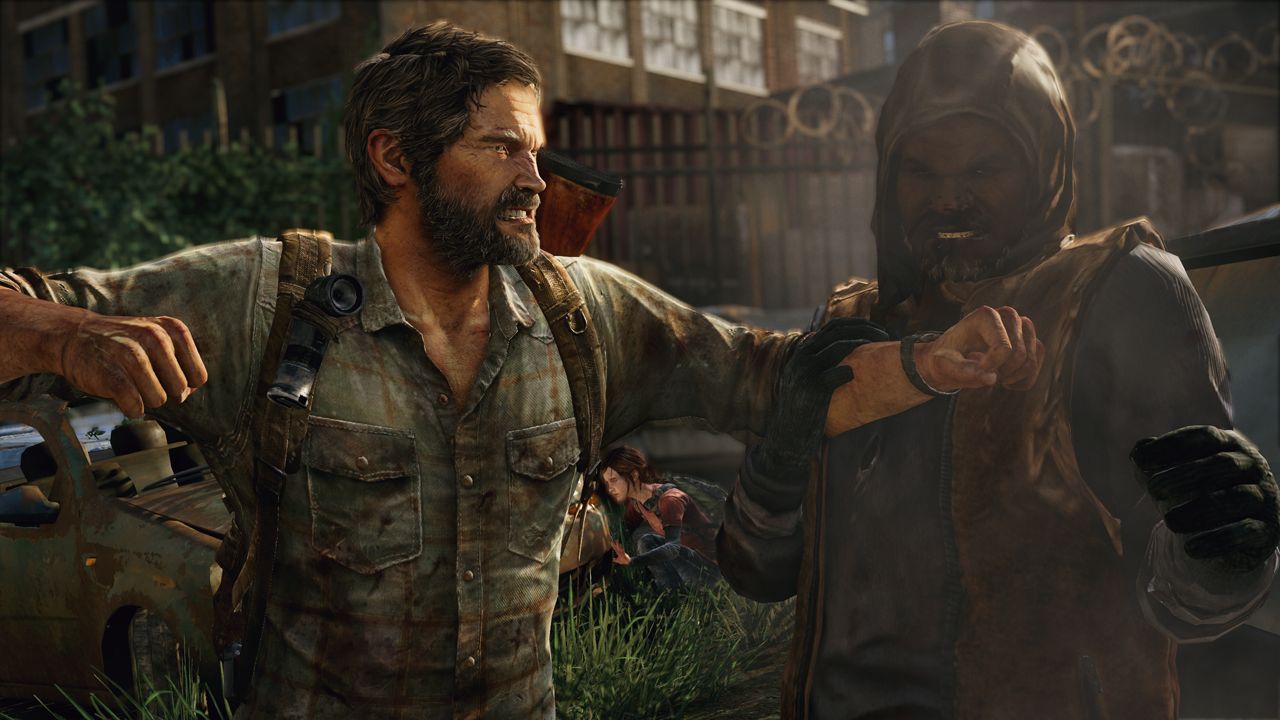
While the writing and characters are fleshed out and well acted, the plot in The Last of Us leaves something to be desired. With a dramatic focus on sacrifice and survival, events begin to unravel in a fairly predictable fashion. There is little here in the way of twists that you can’t see coming a mile away. The developers played it safe, and zombie genre fans will see plenty of familiar events. Probably the best part of the story is the relationship between the two leads, which evolves over time and becomes more heartfelt and personal, helping offset the often depressing mood of the game world. Not only that, both Ellie and Joel are great characters on their own and provide a unique perspective to every situation. It is just as enticing to see how Joel deals with his past as it is to learn more about Ellie and her personality. While action game narratives can be compared to those of movies, The Last of Us feels more like a TV show with distinct character arcs and standalone event scenarios. It's not easy to talk about the story without spoilers, but the people you meet come and go, and there is never a time where a new character enters the scene without the old ones somehow exiting for dubious and cliche reasons. Intensity fluctuates in almost preset patterns, putting our protagonists through peaks and valleys of plot development, which isn’t so bad overall; but it certainly subdues the final chapters since many of the events that came before it were just as memorable if not more so.
It is easier than you might think to talk about the gameplay in The Last of Us without comparing it to Uncharted, as this is a wholly different experience. Being a stealth-focused adventure, the game is best compared to Splinter Cell or perhaps Metal Gear Solid, except with a lot more gore. Realism is important, so Joel acts appropriately for his older age and thus unable to jump great distances or climb anything other than ladders or short ledges. His character has a fairly heavy and even sluggish feel as you move about. Joel is alongside Ellie for most of the story, but sometimes other characters join as you make your way through the United States. There is a distinct lack of wilderness environments until late in the game, as you spend most of your time in cities or suburbs, traversing through skyscrapers, apartment buildings, downtown streets, and sewers. However, given the state of overgrowth and urban decay, the environments manage to strike a balance - it’s nothing overwhelming like Crysis 3, but instead a tactful equilibrium between concrete and greenery.
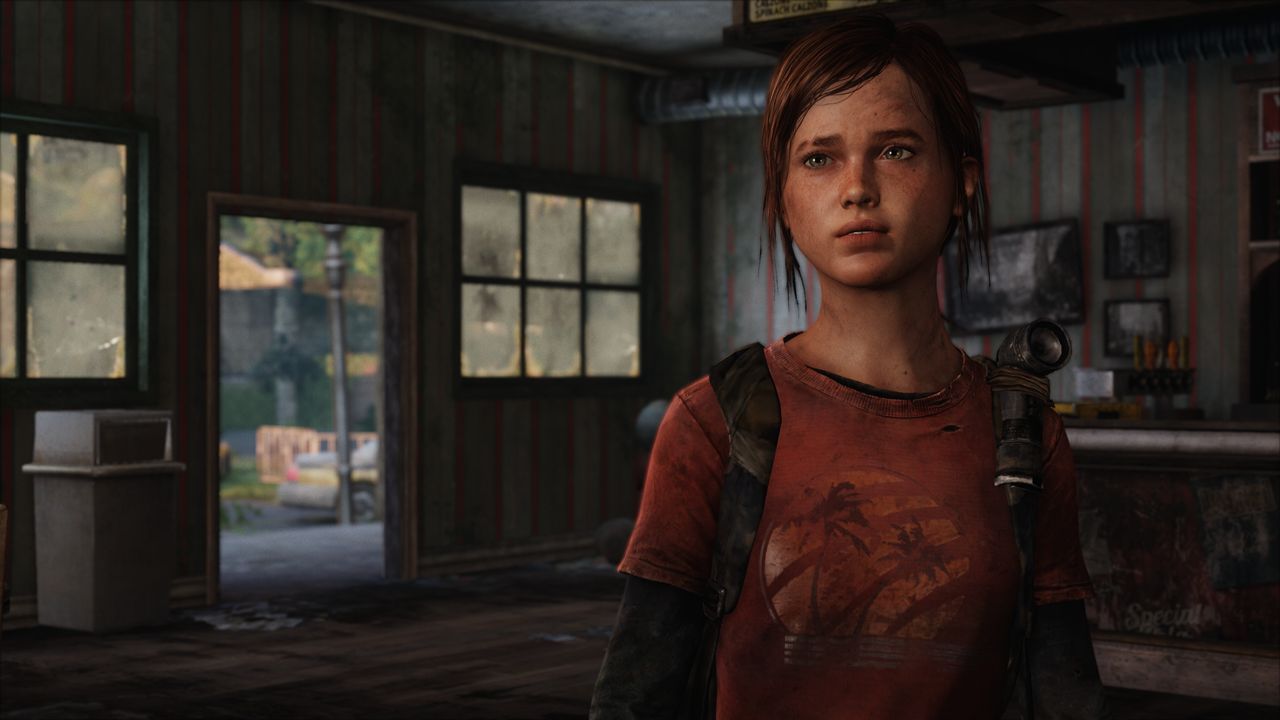
The levels range from mostly linear encounters to some semi-open locales where you can explore a few indoor locations at your leisure. When exploring, the main goal is to collect materials to aid in your crafting ability. There are various types of materials, including water, bandages and nails; these are then used to craft items to help you survive. Joel can craft health kits, bombs, shivs, and other items – the twist being that some materials are used to craft multiple items, so player choice comes into the process. For example, you can either craft a Molotov cocktail or a health pack; a shiv or an upgrade for your melee weapon. In case of the former, the game is populated with health boosts so you’ll rarely need to craft them yourself. Speaking of health – which doesn’t regenerate – Joel must take a few precious seconds to heal, and if he doesn’t finish healing all the way, the progress is lost. This seems a bit unrealistic compared to the rest of the game and creates artificial difficulty, as if suddenly all bandages fall off if the last one isn’t applied. Having said that, the game is only moderately challenging on Medium, thanks to good stealth mechanics and basic enemy AI.
There are also two more types of items to collect – spare parts, which are used to upgrade your guns, and pills, which go into improving your abilities. With gun upgrades, you can increase reload speed, damage, and capacity while reducing recoil. The upgrades vary for each weapon, and there are a few types of rifles and pistols to choose from, each requiring their own ammo type. Pills, meanwhile, are used to upgrade your abilities which range from increased listening mode, more health, ability to save yourself from a melee Clicker attack, and others. Having explored a vast majority of the game, the upgrades were only filled about half way in both weapons and personal perks – giving more reasons to complete the game again in New Game + mode with all your stats carrying over.
When not exploring, you’ll likely be in a hostile area where either infected or humans are on the lookout for you. Joel can carry multiple weapons and swap to others from his backpack, as well as a limited use melee weapon and a distraction item. Stealth is usually the best method, because the gunplay often feels sluggish and your enemies can be difficult to hit. Joel can’t take much beating, and Clickers are usually able to instant-kill you. Though when you do go in guns blazing, as the game sometimes forces you to, it can be immensely satisfying. Getting hit by a shot feels very impacting and gritty, while the melee fights feature some brutal and graphic finishers. Ammo is hard to come by, and melee weapons degrade with every hit, so lack of resources also comes into reasoning to choose stealth over action.
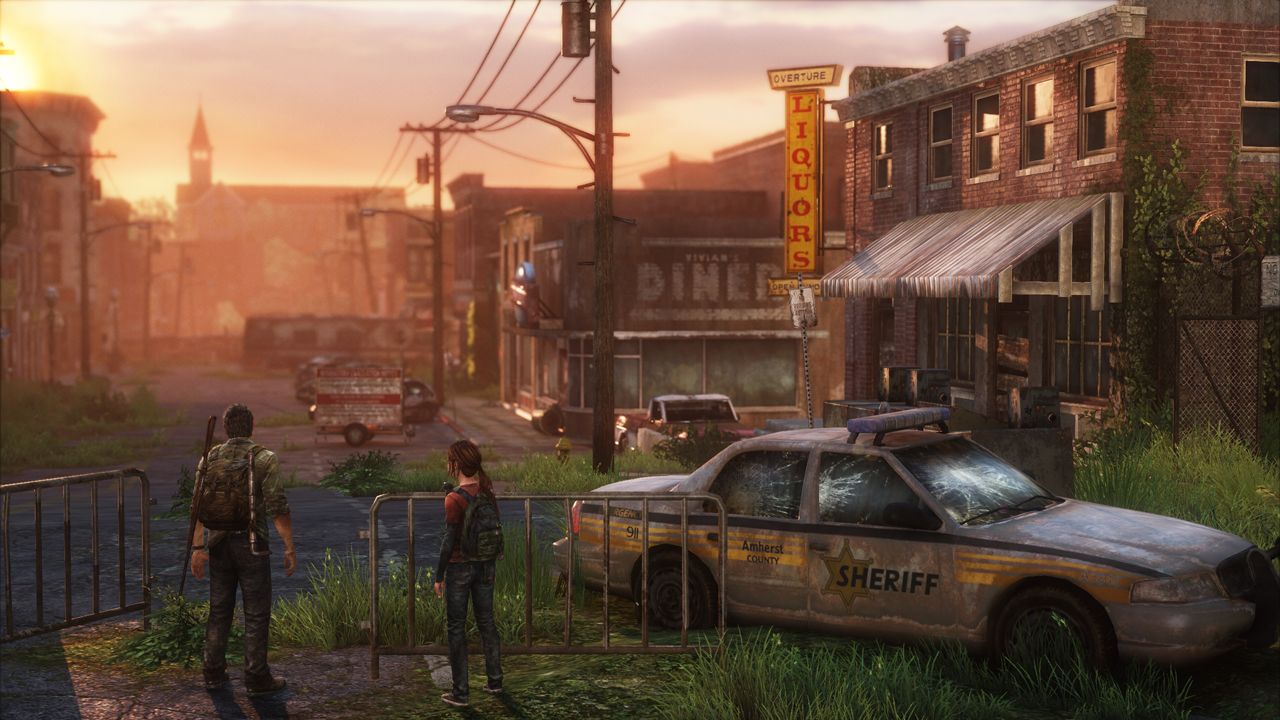
Joel also has a so-called listening mode, where players are able to spot enemies through walls and other objects. As the game lacks an actual cover mechanic, maneuvering into position to peak around corners can be troublesome, so the listening mode helps avoid bumping face to face into an enemy. However, players wishing for a challenge can simply not use this ability, or even turn it off altogether in the options menu.
Going up against humans, who use guns and employ melee weapons the same way as Joel, results in some intense rounds of cat and mouse while stealthily maneuvering through the environment. Enemies will do their best to stay in cover and only engage when they have a good line of sight; surrounding the player and shouting to allies for help. Should they lose sight of you, it is possible to sneak around and ambush them, providing much needed element of surprise and a steadier target. However, the enemy AI is fairly basic, and will just start sweeping the area you were last seen endlessly. It’s a step above Uncharted’s goons, but not exactly a strategic sandbox.
Things change a bit when infected enter the fray. There are two common types of enemies here: Runners and Clickers, plus two less frequent enemy types which we won’t spoil. Runners are similar to the modern interpretation of a zombie – they mindlessly walk or stand around the environment, and attack on sight by rushing the player. The second and more interesting type of infected are the Clickers, who are in fact blind. Sneaking past these enemies requires you to crouch and use analog control to slowly guide Joel around them, or to go for a stealth kill – which requires a shiv, unlike stealth kills on Runners and humans. Should you be spotted by a Clicker, it’s almost always instant death if you let them get close. Some players will find this annoying, just like the time it takes to heal and craft, as a means to artificially increase the difficulty – because death is hardly punishing, simply respawning you back at the start of the encounter minutes earlier. Disappointingly, there are no instances where both humans and infected are present in the same area or fight against each other while you sneak by.
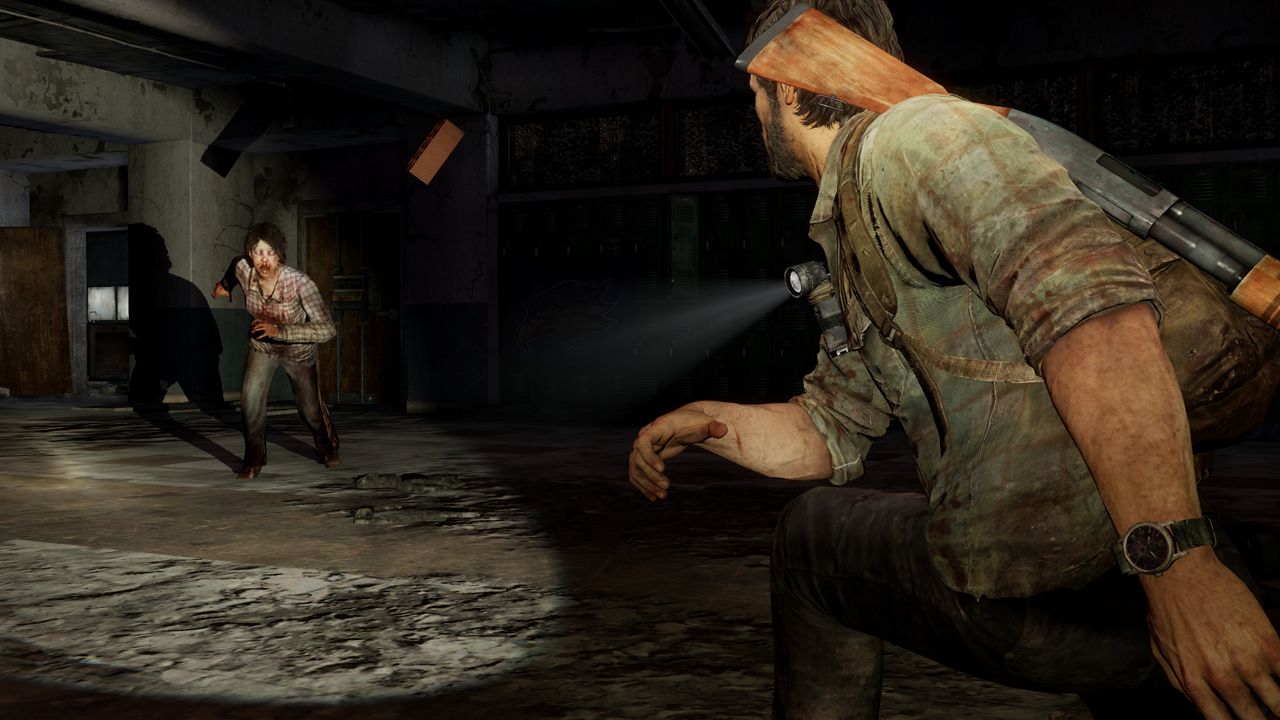
While enemy AI is intelligent enough to pose a threat, your allies usually just get in the way. For majority of the time, enemies will completely ignore everyone but Joel when it comes to stealth, which is a good thing. It’s extremely jarring to be sneaking around a room and suddenly hear your AI try to catch up, thudding with their boots as they run across the room in plain sight to your location – which doesn’t alert enemies. It’s the same type of issues that existed in Uncharted with awkward pathfinding, amplified here due to the nature of the gameplay. There are moments of brilliance when Ellie calls to look behind you as an enemy tries to ambush, or even helps by distracting or taking down said enemy – but these moments are too few and far between.
Exploration and combat areas are what make up the bulk of the Last of Us gameplay experience. Scouting the area for materials, crafting, and then surviving are the key pillars. There is certainly ample opportunity to try out different tactics and approaches for the game’s many hostile environments. Sneaking by a huge group of enemies or taking them on head-on has the potential to provide a multitude of outcomes and thus entertainment value. But having said that, much like the plot, players might find themselves simply going through the motions of exploration, crafting, and combat areas, all stringed together usually in the same order. It can become a bit of a drag having to experience these scenarios in a linear fashion over the game’s lengthy 12+ hours, since not much changes from one encounter to the next. Once you've seen one dark room full of infected with a few openings to sneak by, you've seen them all. The occasional puzzles (which always involve water), action sequences, and even a boss battle or two helps break up the sometimes repetitive pace. A few difficulty spikes also exist, when the game decides to lock the player in a room full of enemies that must be eliminated or are extremely difficult to get by without using firearms. This forced shift in tone brings up memories of boss battles from Deus Ex: Human Revolution.
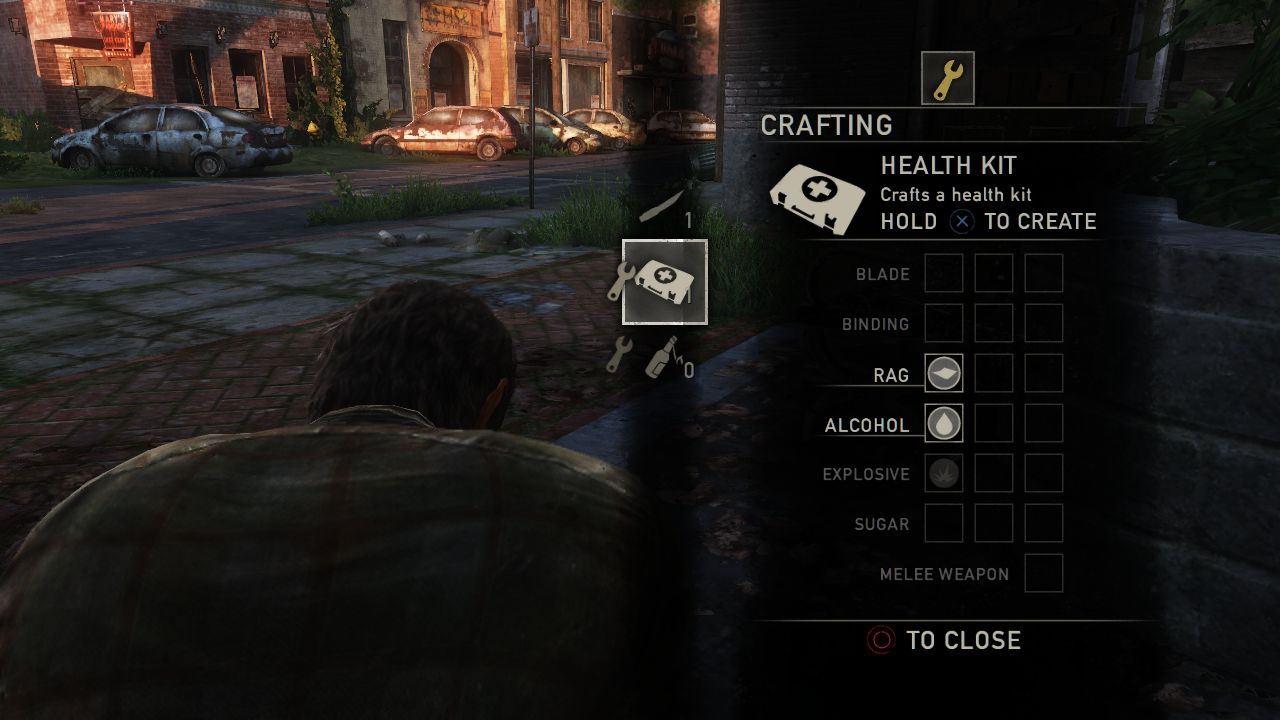
The game sounds and looks quite phenomenal at times, and that should come as no surprise from the folks who pushed the PS3 to its limits with the Uncharted franchise. The cutscene visuals, created with the game engine although not shown in real time, are sharp and detailed and something akin to a higher end PC game. The combat is brutal, detailed and gory, with some great interaction with the environments when going hand to hand, using walls and other objects to finish off enemies. Various post-apocalyptic urban and suburban environments are all well designed and brimming with variety and detail, posing an almost inspiring aesthetic of natural life invading the urban cities. Given that the infection only affects humans, nature has thrived in the twenty years after humanity was almost wiped out. Audio design also gets a standing ovation – not just thanks to the voice acting, but rather the subtle yet well-crafted soundtrack and the haunting ambience of the game world created by distant sound effects. Predictably, the presentation does suffer a bit during online play.
In keeping with the modern tradition, The Last of Us features multiplayer modes. And if you enjoy the single player experience, online play is thankfully more of the same. Supply Raid and Survivors are the two modes that you can partake in; the former being a more traditional deathmatch scenario with respawning, while the latter is round-based and allows for a single life. Players can choose from various weapons and classes, plus a selection of passive buffs and game-wide benefits, and there is plenty of visual customization to be made to your avatar. Like in the campaign, you’ll be short on ammo and have to gather materials as you play across a few maps in a team of four vs four players. You can craft in much the same way as the campaign, albeit faster to avoid bogging the action down, and also create ammo for yourself. Listen mode is present but is limited, and stealth is just as important to surviving. Engaging in firefights will reveal your position to the enemies on the map, and fistfights are just as brutal and require good timing against other players. Should you be wounded, there is a chance to be revived by a teammate similarly to Gears of War.
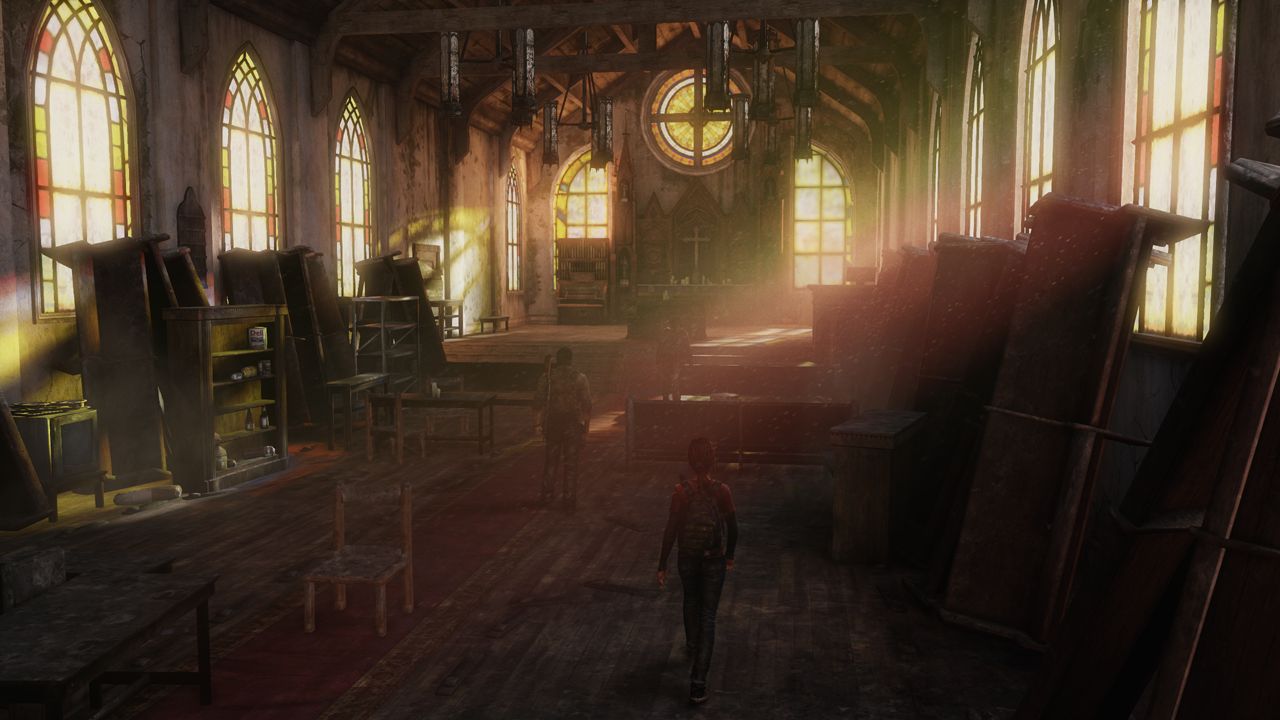
During matches, which spread across a fictional timeline of several weeks, you can obtain provisions by completing actions in game to take back to your camp. Here, a fictional group of your people is trying to survive and need materials, and the group will grow overtime also increasing their needs. As you progress through the days (matches) problems can occur within the group that can be overcome with missions, which are basically special objectives that must be completed. So for example, a sickness will strike your people, and you must gather a certain amount of materials or get a number of headshots in the next few matches. It’s a mechanic that adds just a bit more depth to the proceedings but doesn’t exactly change the way you view online play. Perhaps the most obvious omission is any multiplayer coop involving the infected. Much like Uncharted’s multiplayer, there are some neat ideas here and credit goes to developers for trying to wrap the competitive play with something new to hold the experience together. Time will tell if there is an audience that will enjoy this slow-paced approach, particularly players who prefer multiplayer design of tactical shooters.
The Last of Us is a very solid outing for one of the best PlayStation 3 developers. It’s a game that caters to zombie fans, with great stealth mechanics and even more impressive presentation. While the plot may be predictable and the game sometimes opts for difficulty spikes, it’s a fun ride that genre enthusiasts can easily get on board with. The addition of online play that so closely resembles the campaign prompts no complaints of being a tacked-on feature. It may not be as revolutionary as Uncharted was to the adventure genre, but The Last of Us is a standout and enjoyable experience.
 Comments
Comments




















